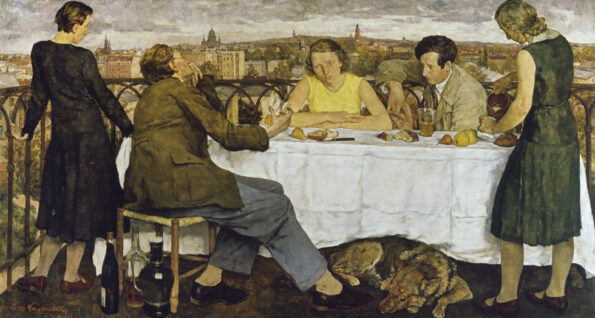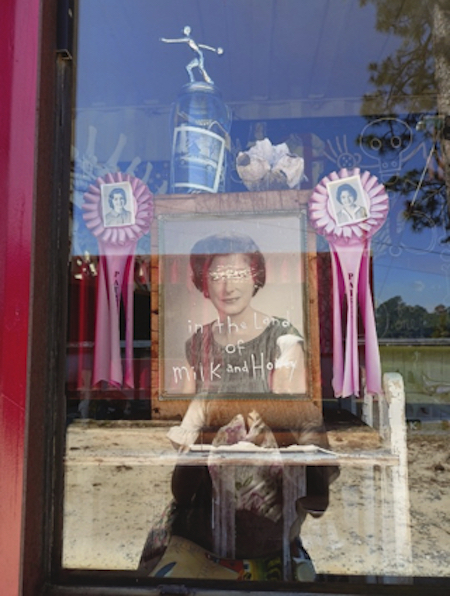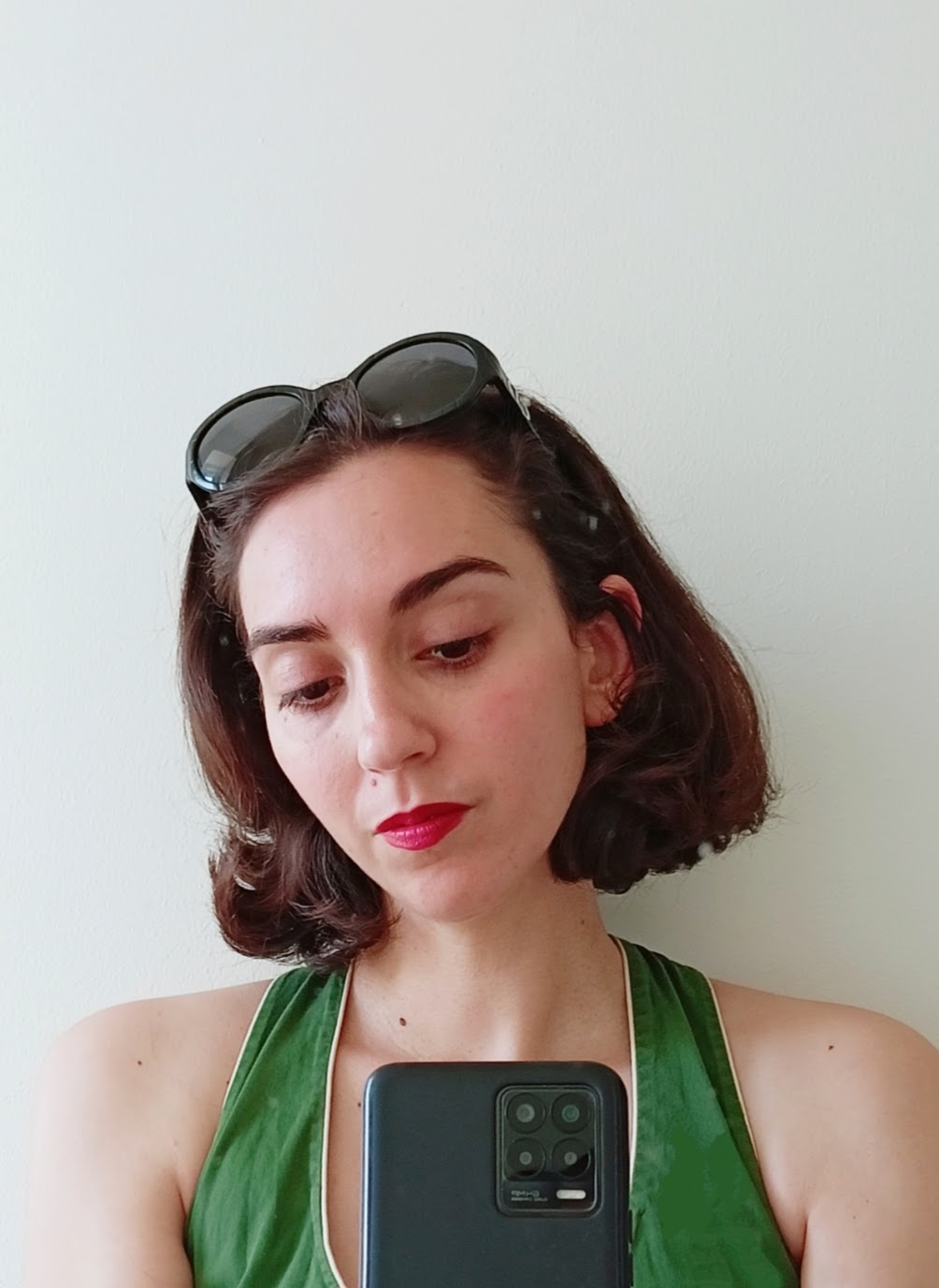Search
To search for an exact match, type the word or phrase you want in quotation marks.
A*DESK has been offering since 2002 contents about criticism and contemporary art. A*DESK has become consolidated thanks to all those who have believed in the project, all those who have followed us, debating, participating and collaborating. Many people have collaborated with A*DESK, and continue to do so. Their efforts, knowledge and belief in the project are what make it grow internationally. At A*DESK we have also generated work for over one hundred professionals in culture, from small collaborations with reviews and classes, to more prolonged and intense collaborations.
At A*DESK we believe in the need for free and universal access to culture and knowledge. We want to carry on being independent, remaining open to more ideas and opinions. If you believe in A*DESK, we need your backing to be able to continue. You can now participate in the project by supporting it. You can choose how much you want to contribute to the project.
You can decide how much you want to bring to the project.

I.
I’ve been living in a hotel in Alabama for two weeks. My favorite guest is a tiger who walks around the lobby giving hugs to the fans of a college football team. There are certain events that become pleasant memories the moment they happen.
II.
I was more nostalgic at twenty, when there was less to miss and more of a future ahead, than at thirty-four. I don’t think this is paradoxical or incomprehensible. The comforting nature we usually associate with the collection of already experienced events explains well why someone would choose the known over the uncertain. At twenty I had, in some ways, more to decide and, therefore, more capacity to make mistakes. I opted for the beauty of certain forms of control.
Much has been written and thought about how nostalgia involves an idealization of the past and the dangers of self-deception that this false control entails. A nostalgic person not only runs the risk of committing the epistemic failure of embellishing the past, but there is something even more problematic, which has to do with a longing that immobilizes and prevents us from carrying out our responsibilities. Not wanting to act to prevent problems makes the nostalgic person not only an insincere subject but also an unethical one.
For Svetlana Boym (2001), there is a way of understanding our relationship with the past that does not turn nostalgia into a problematic emotion. Boym refers to a type of nostalgia that, instead of focusing on the return to a past moment, is aware of the unrecoverable nature of the lived experience. This “reflective nostalgia” focuses on personal narratives in which the subject actively participates in the reconstruction and interpretation of their past. Furthermore, they do not seek to restore the past, but simply to find pleasure in the distance without any real interest in returning to it. More than an attempt at evasion, it is an attempt to recover a way of seeing the world. It does not make the mistake of “comparing times” (Scott A. Howard, 2012), that is, comparing a current situation with a past one. There is a respect and independence towards what we were and what we are.
The most important thing is that those who experience this type of reflective nostalgia are able to admit that, sometimes, the past was different from how they remember it. They have the ability to recognize that not everything was so wonderful and we were not always so good. To achieve this, one must use a very well-cleaned looking glass to appreciate the true value of the past. This is no easy task, of course. Peter Goldie (2003), philosopher of emotions, explains this very well. For Goldie, looking back is an operation that contains a high risk of contamination because, by remembering, we become the judge and the judged of our memories. This means that we appear as part of the content of what we remember and that, at the same time, our own present thoughts and feelings shape and affect this memory. Being aware of how our current value system can alter the past is a task for the nostalgic person who is not only reflective but also sincere.
Joseph Cornell, Sophie Calle, Jonas Mekas, Charlie Brown, Lotte Laserstein, Ramón Gaya and Milena Busquets (when she writes about summers in Cadaqués) are all nostalgic and sincere.
III.
I don’t know if she will remember it, but I gave her a handbag when I was seven years old. This was a bag inspired by a particular woman. A Kelly, a Lady Dior, a Birkin and now a Marín. A bag that was actually a shoe box lined with drawings of daisies scribbled with a magic marker. A generous piece of wool served as a handle. It was neither practical nor waterproof, but it had enough space to store all those crazy things that famous people show to the camera in Vogue’s “What’s in your bag.” Change purses, hair clips, perfume bottles and Emma Watson‘s bottle of gin. I had a rolling-on-the-floor tantrum when I saw that she was reluctant to take it outside for a walk. I’m not sure what happened to that shoe bag but for a while we used it to store cassette tapes. Some of those tapes contained home recordings of an imaginary radio show. The main section of the program was a weather report in which we reported exclusively on the previous day’s weather. We didn’t have the technology to predict what was to come so we opted to inform our listeners of the past. Many years later, I discovered that Swedish newspapers also reminded people that it had snowed the day before.
IV.
Nostalgia is a purely aesthetic emotion. At its center lies a selfless pleasure that has nothing to do with practical or moral purposes. In addition, the sincere nostalgic shares three virtues with the aesthete: attention, sensitivity and courage. The nostalgic person observes the past in the same way that the aesthete analyzes beauty, with the vulnerability of someone who understands that the act of remembering and appreciating are not under their control, and aware that these acts can transform them by revealing a part of the world they didn’t know.
V.
The nostalgic person has the ability to split life in two. The exact place in which we decide to divide the ‘now’ from the ‘before’ says a lot about us. For some of us, it will be the corner store and all the candy we could buy with a quarter, while for others, the reference will be a time before a specific pain or sorrow emerged. I have a theory that it is impossible to empathize with nostalgic people (Martínez Marín, 2019). Nostalgia sends personal invitations. It is self-referential and does not share experiences. Nostalgia, therefore, feels closer to envy or guilt than to joy or sadness, which are highly contagious emotions. This does not mean that we cannot find similarities in the biographies of others. In the end we all miss something that is loved or appreciated, but why it is appreciated has to do with personal reasons that are usually incomprehensible to others.

Museum of Wonder, 2023, Seale (Alabama)
References
Boym, S. (2001). The Future of Nostalgia, Nueva York: Basic Books.
Goldie, P. (2003). One’s Remembered Past: Narrative Thinking, Emotion, and the External Perspective, Philosophical Papers, 32 (3), 301-319.
Howard, S.C. (2012). Nostalgia, Analysis, 72 (4), 641-650.
Martínez Marín, I. (2019) Robinson and Self-Conscious Emotions: Appreciation beyond (fellow) feeling, Debates in Aesthetics, 14 (1), 74-94.
(Cover image: Lotte Laserstein, Kväll över Potsdam, 1930, Staatliche Museen zu Berlin, Nationalgalerie)

Irene Martínez Marín holds a PhD in Aesthetics from Uppsala University. Uppsala is in Sweden. Land of cinnamon buns and slipping on ice. Buns: all-year-round. Risk of bruises: the first five months of the year. She writes about rationality, appreciation and aesthetic emotions. Her work has been awarded by the European Society for Aesthetics (Fabian Dorsch Essay Prize, 2019) and the American Society for Aesthetics (Irene Chayes New Voices Award, 2021).
irenemartinezmarin.com
"A desk is a dangerous place from which to watch the world" (John Le Carré)